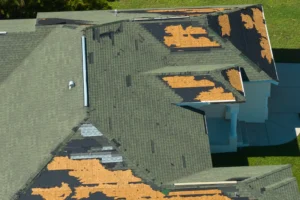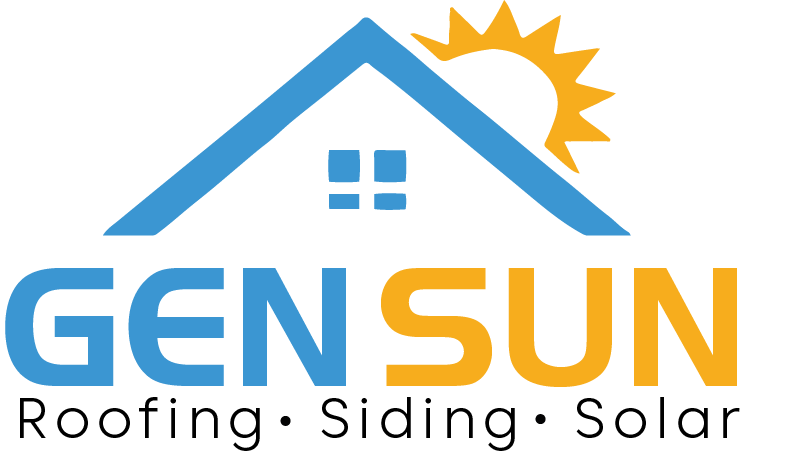
Installing solar panels is a smart investment for homeowners in New Jersey looking to reduce energy costs and support a greener environment. However, one critical factor many homeowners overlook is the condition of their roof before installing solar panels. Solar systems typically last 25 to 30 years, and placing them on an aging or damaged roof can lead to costly repairs down the line.
At GenSun Roofing, we specialize in helping New Jersey homeowners prepare their roofs for solar installations, ensuring a durable, long-lasting system. This guide highlights the top five signs it’s time to replace your roof before adding solar panels, saving you time, money, and headaches.
1. Your Roof is Near or Beyond Its Expected Lifespan
One of the most straightforward indicators that you should replace your roof before installing solar panels is its age. Different roofing materials have typical lifespans:
- Asphalt shingles: 15-25 years
- Metal roofing: 40-70 years
- Slate or tile: 50+ years
If your roof is approaching or past its expected lifespan, it’s wise to replace it before adding solar panels. Installing solar panels on an old roof often means removing and reinstalling them later to repair or replace the roof — a costly and labor-intensive process.
For most New Jersey homes, asphalt shingles are common and typically last around 20 years. If your roof is more than 15 years old, consider a professional inspection to assess its condition before moving forward with solar.
2. You Notice Visible Damage or Wear on Your Roof
Visible signs of wear and damage are clear signals that your roof may not be ready to support solar panels. These signs include:
- Cracked, curling, or missing shingles
- Granule loss visible in gutters or around your home
- Sagging roof deck or uneven surface
- Water stains or mold in your attic or ceilings
Solar panels add extra weight to your roof (approximately 3-5 pounds per square foot), and installing them on a compromised roof can worsen existing damage. Additionally, if your roof has leaks or weak spots, solar installation may trap moisture, causing further issues.
If you spot any of these issues, scheduling a thorough roof inspection with a trusted contractor like GenSun Roofing is essential before proceeding.
3. Your Roof Has Poor Ventilation or Insulation
A roof with poor ventilation or insulation can lead to heat buildup in your attic, reducing the efficiency of your solar panels and potentially damaging roofing materials over time. Proper attic ventilation helps regulate temperature and moisture levels, extending your roof’s life and enhancing solar performance.
Signs of poor ventilation include:
- Excessive heat in your attic during summer
- Ice dams forming in winter due to uneven roof temperatures
- Mold or mildew growth in attic spaces
Before installing solar panels, it’s important to ensure your roof system includes adequate ventilation and insulation. At GenSun Roofing, we offer comprehensive roof upgrades that improve energy efficiency and prepare your home for solar.
4. Your Roof Has Structural Issues or Weaknesses
Beyond surface damage, structural issues in your roof’s decking, rafters, or trusses can compromise the integrity of your home and your solar installation. Structural weaknesses might not be obvious without a professional assessment but can lead to sagging, leaks, or failure under added solar panel weight.
Common causes of structural issues include:
- Water damage or prolonged leaks
- Pest infestations such as termites or carpenter ants
- Poor original construction or materials
- Heavy storm damage
A professional roofing contractor can evaluate your roof’s structure and recommend repairs or full replacement to safely support solar panels.
5. Your Roof Material is Unsuitable for Solar Panels
Not all roofing materials are ideal for solar panel installation. While most solar companies can work with common roofing types, some materials pose installation challenges or risks, especially on older roofs.
Ideal roofing materials for solar panels include:
- Asphalt shingles
- Standing seam metal roofing
- Flat roofs with TPO or PVC membranes
Less suitable or more fragile materials include:
- Wood shakes (due to fire risk and fragility)
- Slate or clay tile (fragile and expensive to work with)
If your roof is made of a challenging material or is showing wear, it might be best to replace it with a solar-compatible roof before installation. This ensures a safer, more efficient solar system and reduces future repair costs.
Why You Should Choose GenSun Roofing for Roof Replacement Before Solar
Replacing your roof before installing solar panels is a smart move — and partnering with the right contractor makes all the difference. At GenSun Roofing, we:
- Offer solar-ready roofing solutions tailored to New Jersey’s climate
- Provide no upfront cost and no credit check financing options
- Beat any reputable competitor’s quote by $500
- Use durable materials designed for long-term performance and solar compatibility
- Handle both roofing and solar panel installation for seamless project management
Our in-house team is experienced, licensed, and trusted by homeowners across NJ to deliver quality and value.
Conclusion
Installing solar panels on your home is a fantastic way to save money and reduce your environmental impact. But rushing to install solar on an old or damaged roof can lead to expensive problems later.
If your roof is aging, damaged, poorly ventilated, structurally unsound, or made from unsuitable materials, it’s time to consider a roof replacement before solar installation. Taking this step ensures your solar system performs optimally, lasts as long as possible, and protects your home effectively.
Ready to prepare your roof for solar? Contact GenSun Roofing today for a professional inspection and free quote. Our experts will help you make the best choice for your home, budget, and sustainability goals — all with flexible financing and our $500 price beat guarantee.
